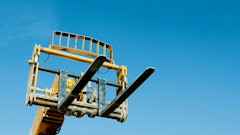
Just when we thought we were out of the weeds, here comes another virus variant (omicron) to stir the pot once more, giving us another major issue to deal with as we enter 2022. Just what we needed!
Unfortunately, the equipment situation is still a mess, as well. There is significant demand but a lack of both new and used units. New unit prices are up 20+% and used units are up 30+%, causing a lot of pent-up demand and deferral of equipment purchases. In short, contractors are deciding to keep their current internal fleets longer, hoping that required parts will be available as needed.
As part of my homework to keep up to date on the industry, I reviewed two major industry reports prepared by Deloitte (CPS firm) and Equipment Watch. The major points I gathered were:
- Equipment costs will remain above average for some time to come. So, if you need equipment for your 2022 schedule, be prepared to have to deal with used or rental units.
- Technology and related productivity increases will allow companies that embrace it to lower time and costs on their jobs, which will become reflected in their bid pricing sooner rather than later.
Another point I noted in the reports is that equipment costs now represent up to 30% of job costs. When I was CFO at the Associated Equipment Distributors, it was running at about 17%. Thinking about it, this could mean:
- equipment costs are higher;
- more equipment for specific uses is available today compared to 10 to 15 years ago;
- or contractors are finding ways to cut costs and improve productivity using the current crop of equipment available to them.
Probably a combination of the three.
Plan for Productivity
Planning for 2022, I would advise you do a quick inventory of what you have and develop a unit by unit list of maintenance required now or sometime during the year. As part of this process, you may want to nail down your parts suppliers and purchase any hard to find parts if they are available. In addition, I would schedule any outside work ASAP to determine whether the dealer or rental company can make your units ready before your construction season starts.
On the productivity front, if you want to stay competitive and profitable, you should examine your people, processes and technology to determine if they will provide adequate productivity to remain competitive compared to contractors that have chosen to upgrade their systems to cut the costs and time required to complete a job. The important thing about productivity is it is basically “free” if you can use your existing staff to get work completed with fewer hours compared to what they did in the past – same people and material costs converted into a completed project in less time.
Believe me, this is where the industry is heading, meaning changes are required to improve productivity. I can promise you will have a problem if you are doing things the same way you did seven to 10 years ago.
One area where a lot of contractors are suffering is finding adequate help. Guess what? There are cost-effective technology platforms focused on recruiting blue-collar workers that can help. I suggest investigating these platforms and contacting them to arrange a demo. (Links to several the options can be found below.)
Prepare for Inflation-related Cost Increases
The last topic we need to cover before ‘22 arrives is inflation. It is here and it is going be around for some time. Contractors will feel it in material, labor and interest costs. Consequently, it may be prudent to consider converting any floating rate borrowing into a fixed rate note while rates are still low. Last I hear, they are expecting at least two rate increases during the year.
With inflation raising your costs, your bidding has to take these higher costs into account, which I’m sure it will. But even if it does, you have to manage your margins on a real-time basis to ensure they will provide gross profit dollars in line with your historical gross profit margins.
You do not want to find yourself in a position where you bid based on what you thought your costs would end up and then find out the margin dollars are well below where they should be. In 2022, where costs can materially change throughout the year, you have to know on a daily basis how “real” cost compares against budget. See what your system can do to provide this information.
Before we close, one quick follow-up: The Employee Retention Credit referred to earlier this Fall will not be available for Q4 of 2021 unless you are a new company. It’s still available for Q1, Q2 and Q3 if you qualify.
Now, let’s hope that the pandemic is behind us and all of you can get booked up for the entire year. But even if that is the case, material, payroll and funding costs need to be monitored closely.
Make a lot of money in 2022!


























